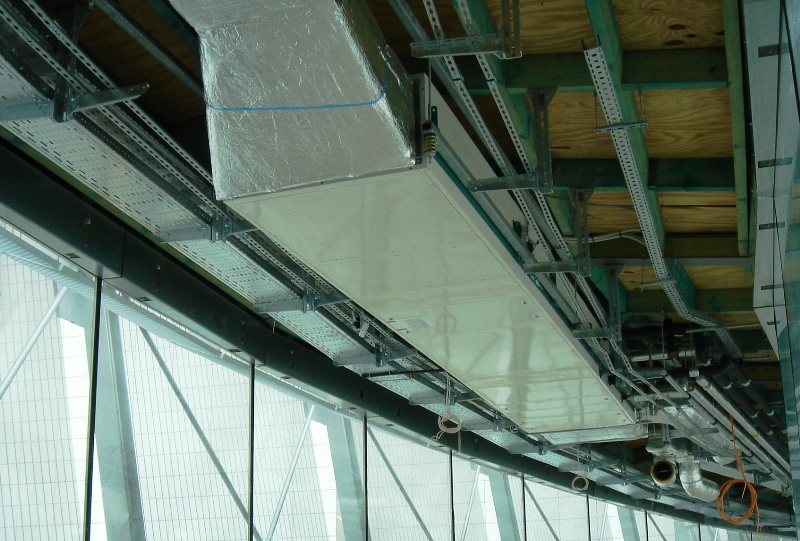The HVAC Trunk line is a crucial ductwork section of every home. It runs throughout a home, commercial building or any other space comprising HVAC devices. The ductwork is highly necessary for the correct working of the whole system.
Thus, building a reliable trunk line and knowing everything about it is vital. The article comprises all data you require for your Duct Trunkline. Keep reading to get the finest insights to build a suitable design.
What does an HVAC Trunk Line mean?
By trunk, one often imagines huge things used to carry a large quantity of load. For instance, automobile trunks built for heavy suitcases, travel trunks designed for clothes, and the most famous elephant trunk store ample water. Thus, it is not a big wonder that the duct trunk line of any heating system is a massive duct that leads the cool and warm air in and out of a furnace.
Further, the main trunk or line is set across the length of a residence and is disrupted by several other tiny feeder ducts that ensure airflow in varied areas of a house. The set-up of a trunk line relies on where and how you want to build the residence. The HVAC trunk line length is usually built there if a home has a basement. However, trunk lines are normally located in its attic area only for homes that do not have any basements. Overall, it is the primary line and framework that determine the entire functioning of your HVAC systems.
Why is building a reliable hvac trunk line design important?
The ductwork in your residence is liable for good air circulation in your entire home. Well-sized and fitted ductwork offers many extended benefits. To begin, it will limit the pressure on your HVAC devices and also extend their life and help you save on additional maintenance costs.
Next, the air in your home will be cleaner and carry fewer pollutants, allergens, and other toxic particles. Also, the finer the air circulation, the better your filter will block these pollutants.
Lastly is the ease and comfort it offers. Reliable ductwork in your residence will limit your house’s hot and cold spots by offering stagnant, even setting in the entire home.
If the HVAC trunk line size is improper and fitted wrongly, issues will arise. Bad ductwork leads to blockage of air in your line and increases pressure on your HVAC device. Further, this will lower its life and impact overall comfort.
Altogether, your ductwork is as crucial as the HVAC equipment you install. So, the only way you can assure yourself that your device and ductwork are well-sized is by using a reliable HVAC trunk line calculator. It will ensure you take the right measures and get well-designed ductwork.
Many experts skip this, but one must never make this error, especially with large-scale HVAC projects.
What are the Chief Parts of your HVAC Trunk line?
An HVAC duct comprises several components. We have listed some chief parts every person must identify. Read on to grasp more details:
- Pipes and Ducts
The pipes and ductwork in your residence are built using varied components. In other words, the duct and trunks are the chief channels that attach to air handlers and offer a conduit for cool or warm air to be released from your home. Further, the duct trunk is the chief duct, while the other minor pipes connect those pipes to the main duct.
Many times, these ducts and pipes are built out of galvanized steel. However, for areas like walls, one necessitates flexible options like aluminium. This aluminium is commonly known as the flex pipe in the HVAC trunk line.
Apart from the pipes and trunks, different ducts gather air from varied places in the home. For instance, a tiny vertical pipe called a stack permits air to move vertically via thin walls. Further, one can also locate stack heads at the end of these pipes.
- Duct Transitions
These ducts must be connected as per the HVAC trunk line design you use for your home for your system to function efficiently. HVAC systems do not use a one-size approach where any design can fit into any system, so these pipes and trunks must be attached using duct transitions only.
Further, the duct can also be fixed or attached using take-offs, cleats, and turning vanes. Also, other unique connectors like angled boots can help you connect the system well. These contents work together to make pathways via your home to invite comfortable air into your residence.
- Plenum
A plenum is a huge box that preserves air for HVAC systems attached to the varied ducts. Usually, there are two types in this category. First, the supply plenum and the other is a return plenum. The HVAC system fixes the supply plenum with warm or cool air sent via the duct system. When the cool or warm air comes into a room, it blocks the air present in the room outside via different ducts. These ducts send this additional air to the other plenum. Now, the returned air can be used in different ways depending on the HVAC system.
- Flues
They are crucial parts that help emit air. Usually, they are located in HVAC systems where toxic fumes are formed by cooling or heating. These fumes are pushed outdoors via the flues. If the returned plenum of the HVAC fails to recycle the returned air, it will most likely be vented out using the flues.
- Refrigerant Lines
The refrigerant lines in an HVAC trunk line helps in bringing it to a compressor. A good HVAC trunk line insulation permits better cooling and heating of the air.
- Air Handler
The air handler is where the hvac trunk line booster fan and filter are placed. The fan helps in moving the air inside the ductwork. Further, this part also includes cooling and heating coils.
- Lines and Drain Pans
HVAC systems are built to cool or heat air, but they generally dehumidify it as well. We mean that the device can create the condensation in a system for which drain pans are placed. These parts carry the water accumulated during the heating or cooling process and vent it out of your residence. Without these crucial parts, you could be easily susceptible to rust and mold inside your home.
Conclusion
The Duct Trunkline is a very vital part of an HVAC system. You might have clearer learning of the ductwork and its use by now. Thus, use the correct HVAC trunk line design and make the most out of your entire HVAC system.
Learn about our air duct cleaning equipment.

